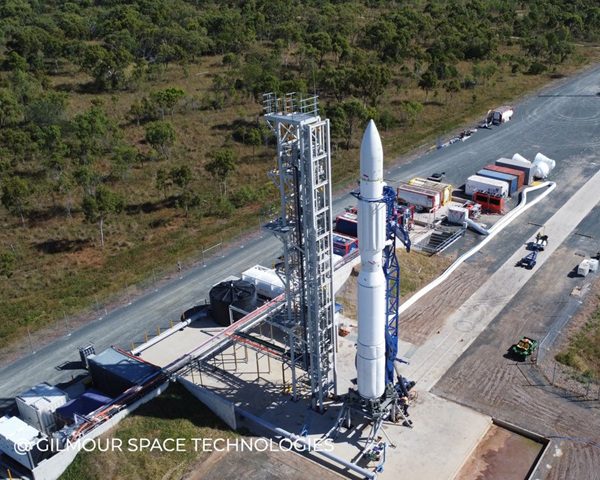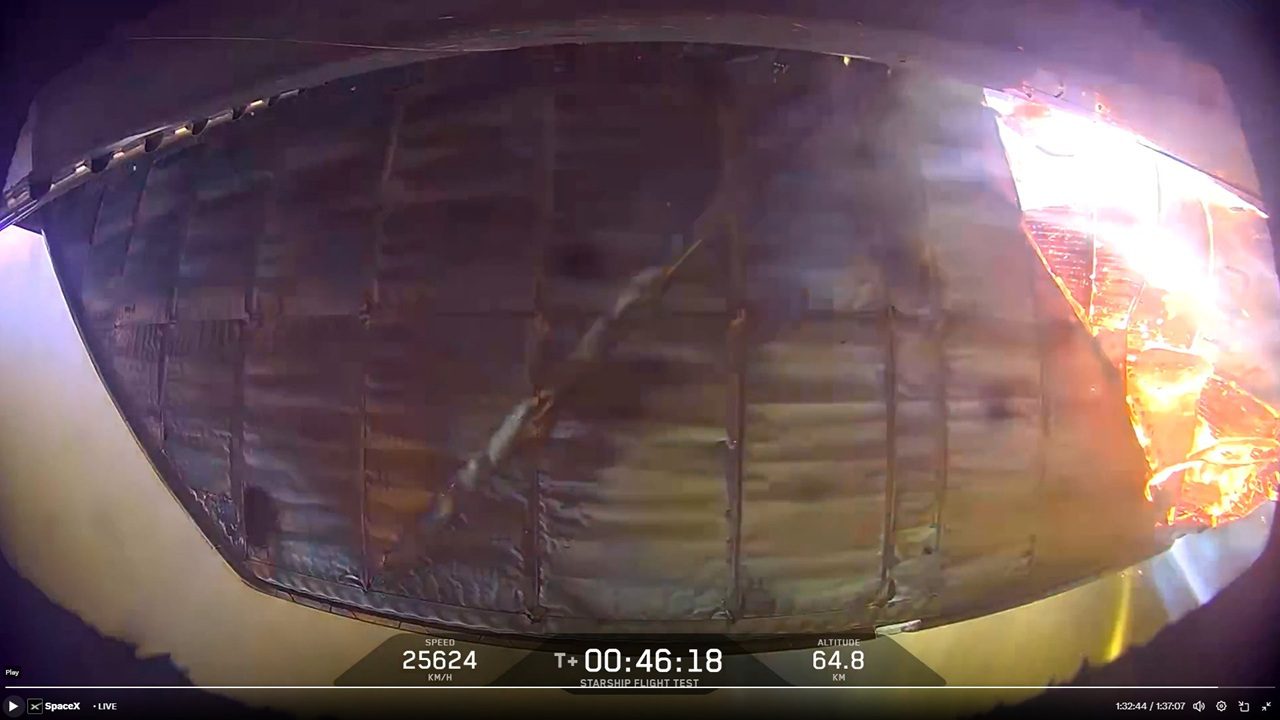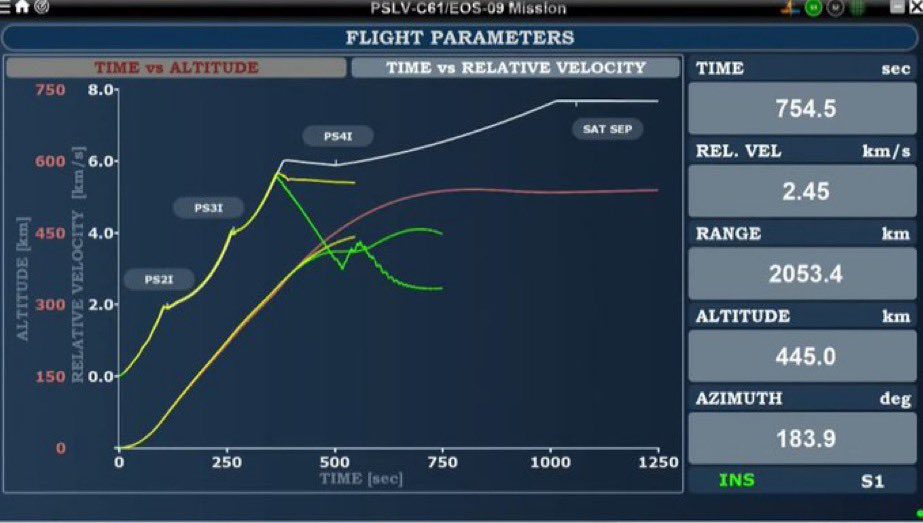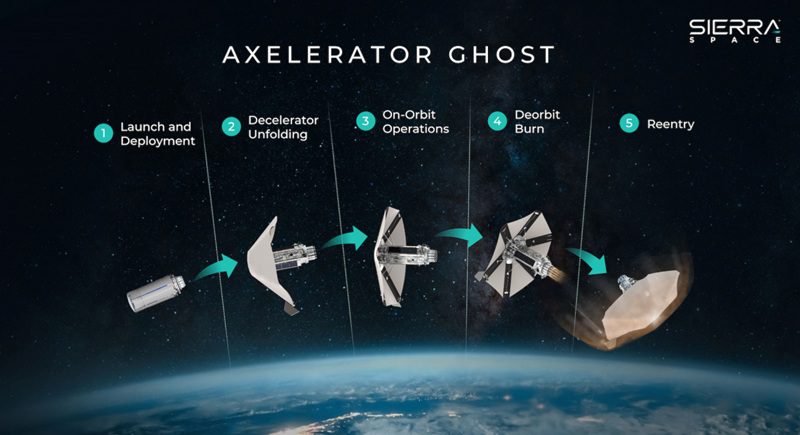Russian cosmonauts Anton Shkaplerov, current commander of Expedition 66, and Peytr Dubrov made a spacewalk from the International Space Station (ISS) on 19 January to prepare the recently docked Prichal module to accept new Progress and new Soyuz crew-carrying craft on its five available ports. The longer than seven-hour spacewalk began at 1217 GMT with the opening of the Poisk module hatch. The astronauts used a 14 m long telescoping boom to carry themselves to the end of the Prichal module from Poisk.
The work entailed attaching power and communications cabling from the main station to the Prichal module. The cosmonauts then installed some Kurs automatic docking system antennas on the module as well as some docking targets. The cosmonauts also repositioned some hand rails and a TV camera. They received some criticism for ditching some covers and wipes overboard into orbit. While taking care to send them “backwards” from the direction of travel of the ISS, minimising the risk of a subsequent collision, these pieces have added to orbital debris, at least for a time, until the drag from that small amount of atmosphere slows them down enough for re-entry to take place.
Cosmonauts Dubrov and Shkaplerov closed the Poisk airlock hatch at 1928 GMT and began repressurisation of the airlock at 1932 GMT, completing ISS spacewalk VKD-51.
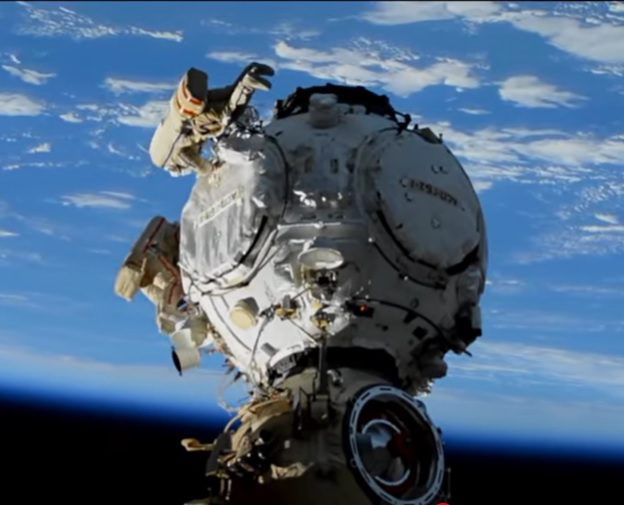
Russian cosmonauts work on the outside of the Prichal module on 19 January 2022. Courtesy: Roscosmos/NASATV
Post Script: The cosmonaut spacewalk was not the only significant event for the ISS during January. Earlier in the month, the Progress MS-18 cargo craft fired its engines for 395.4 seconds to raise it and the ISS, to which it was attached, by 1.2 km on 12 January.
On 23 January at 1540 GMT, the commercial resupply services craft, Dragon CRS-24, undocked from the International Docking Adapter on the ISS’s space-facing port of the Harmony module (IDA-3). Dragon CRS-24 then fired its thrusters to move a safe distance from the ISS. The spacecraft was originally expected to leave the space station on 22 January, but the undocking was delayed 24 hours due to adverse weather conditions at the targeted splashdown zone off the coast of Florida. That location enables quick transportation of the experiments to NASA’s Space Station Processing Facility at the Kennedy Space Center. Dragon CRS-24 returns with over 2,220 kg of valuable scientific experiments and other cargo. It had docked with the ISS on 22 December 2021 with 2,989 kg of hardware, research investigations equipment and crew supplies.
On 26 January, the five nanosatellites were deployed from the NanoRacks Cubesat Deployer NRCSD: FEES2, GASPACS, PATCOOL, DAILI and TARGIT.
Derek Goddard contributed to this story.



